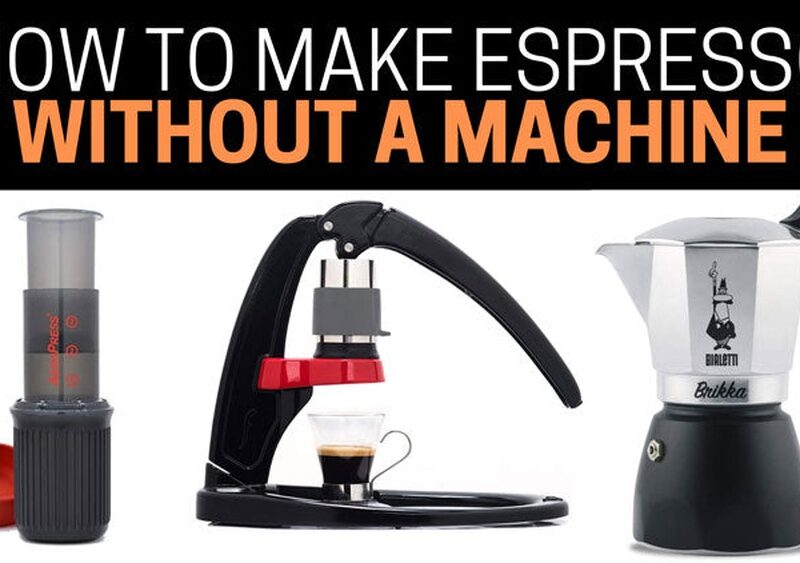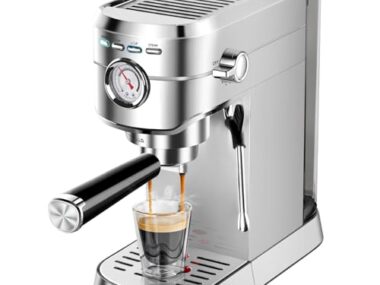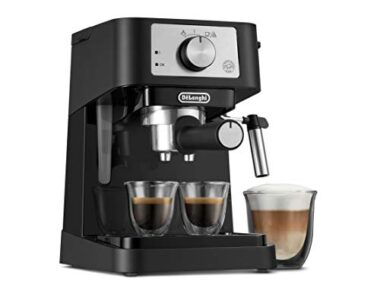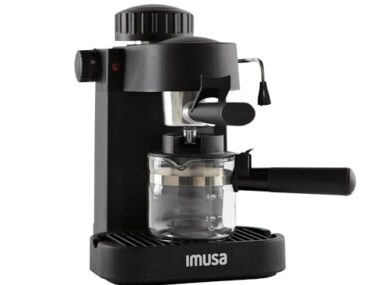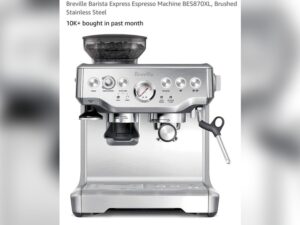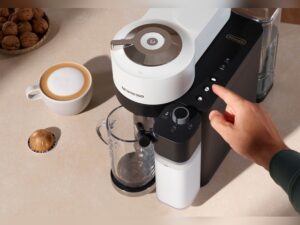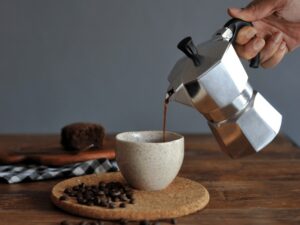Craving a rich, bold espresso but don’t have a fancy machine at home? You’re not alone.
Making the perfect espresso without a machine might sound tricky, but it’s easier than you think. Imagine enjoying that strong, smooth coffee flavor anytime you want, with just a few simple tools. You’ll discover easy steps to create a delicious espresso that rivals your favorite café—no expensive equipment needed.
Ready to impress yourself and your taste buds? Let’s dive in and unlock the secrets to the best espresso you can make at home.
Choosing The Right Coffee Beans
Choosing the right coffee beans is the first step to making great espresso without a machine. The beans affect the flavor, aroma, and strength of your coffee. Picking the right type and roast can make a big difference. Freshness and grind size also play key roles. Let’s explore what matters most when selecting beans.
Arabica Vs Robusta
Arabica beans have a smooth, mild flavor. They often taste sweet or fruity. Robusta beans are stronger and more bitter. They have more caffeine and a heavier body. For espresso, many prefer Arabica for its rich taste. Some blends mix both for balance and extra kick. Choose based on what flavor you enjoy most.
Freshness And Roast Level
Fresh beans make better espresso. Look for beans roasted within the last two weeks. Avoid beans that are too old or stale. Dark roast beans suit espresso well. They bring out bold, rich flavors. Medium roast beans also work for lighter, brighter notes. Avoid very light roasts, as they may taste sour or weak.
Grinding For Espresso
Grinding is crucial for espresso without a machine. Use a fine grind, almost like powder. Too coarse, and water passes through too fast. Too fine, and the coffee may become bitter. Grind just before brewing to keep the flavor fresh. A consistent grind helps extract the best taste from your beans.

Credit: www.youtube.com
Essential Tools Without A Machine
Making great espresso without a machine is easier than many think. The right tools help extract rich flavors from coffee grounds. These tools suit small kitchens and budgets. Each tool offers a unique way to brew strong, delicious espresso-style coffee. Understanding their use ensures a satisfying cup every time.
Using A French Press
The French press is simple and effective. Use finely ground coffee for a strong brew. Add hot water just off the boil. Stir gently and let it steep for about four minutes. Press the plunger slowly to separate grounds from coffee. This method creates a bold and rich flavor similar to espresso.
Moka Pot Method
The moka pot is a classic choice for espresso lovers. Fill the bottom chamber with water. Add finely ground coffee to the filter basket without packing it. Heat on the stove until coffee bubbles up into the top chamber. This produces a dark, intense brew. The moka pot is easy to use and delivers great taste.
Aeropress Technique
The AeroPress is versatile and quick. Place a filter in the cap and rinse it. Add finely ground coffee and hot water. Stir for about 30 seconds. Press the plunger slowly to extract the coffee. This method results in smooth, strong coffee. The AeroPress is portable and perfect for travel or home use.
Water Quality And Temperature
Water plays a big role in making espresso without a machine. The right water temperature and quality help bring out the best flavors. Using poor water or wrong temperature can ruin your coffee.
Focus on water temperature and quality to get rich and smooth espresso at home.
Ideal Water Temperature
The perfect water temperature for espresso is between 195°F and 205°F (90°C to 96°C). Water too hot burns the coffee. Water too cool makes weak coffee. Keep water just below boiling to get strong flavor and good extraction.
Use a thermometer or let boiled water sit for 30 seconds before brewing. This helps reach the ideal temperature.
Importance Of Water Quality
Good water quality means clean, fresh water without strong tastes. Tap water with chlorine or minerals can spoil coffee taste. Use filtered or bottled water for best results.
Water with balanced minerals helps extract coffee oils and flavors well. Avoid very hard or very soft water for better espresso taste.
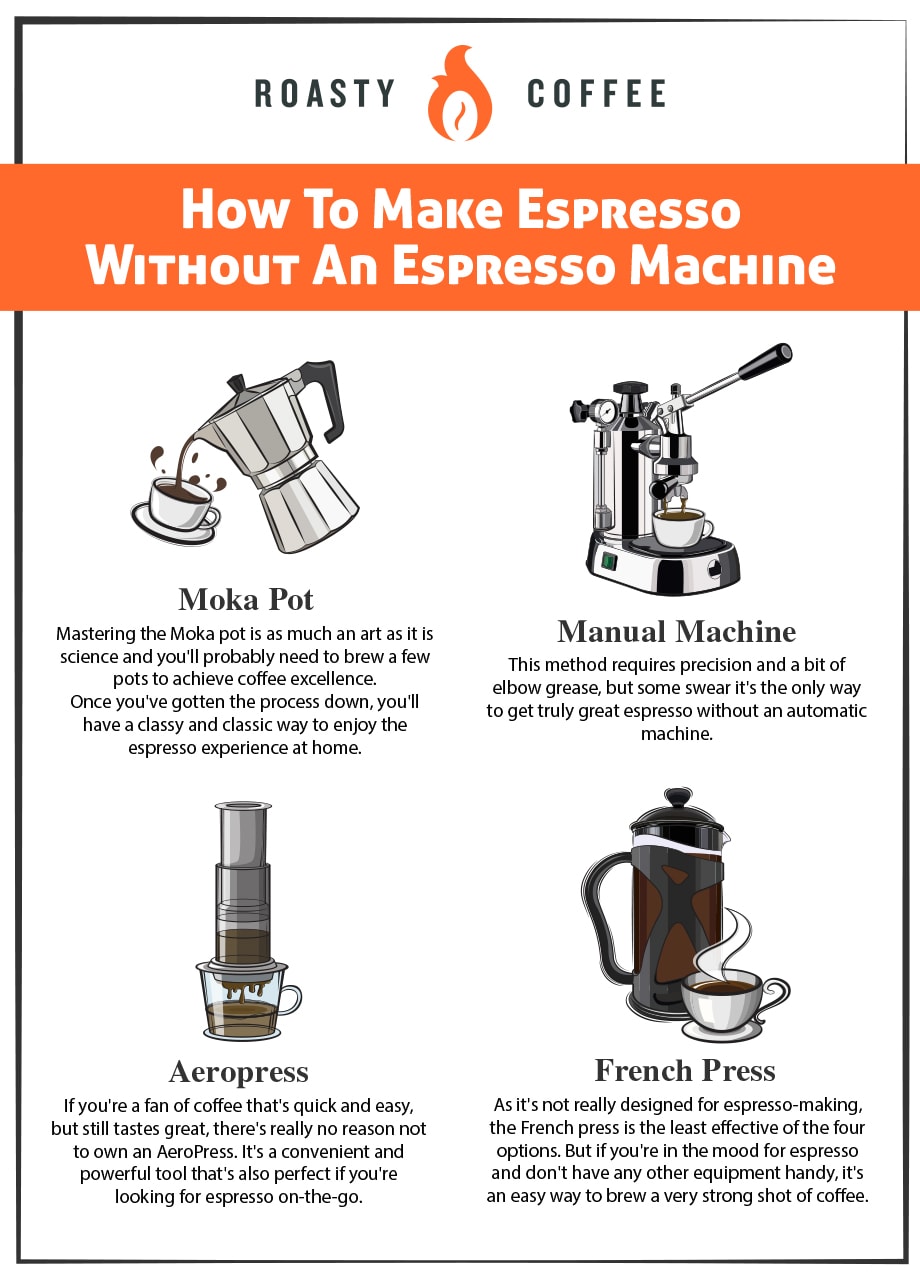
Credit: buddiesgrease.com
Perfecting The Brew Process
Perfecting the brew process is key to making great espresso without a machine. It controls flavor, strength, and aroma. Small changes in coffee or water can change the taste a lot.
Focus on measuring, timing, and extraction to get the best cup. These steps help bring out rich, bold flavors like a café espresso.
Measuring Coffee And Water
Use a kitchen scale for accuracy. Measure about 18 to 20 grams of coffee for a double shot. Use clean, fresh water around 90-96°C (195-205°F). The water amount should be 30 to 40 ml for a strong espresso taste.
Keep your measurements consistent. It helps repeat the same great taste every time.
Brewing Time Tips
Set a brewing time between 25 and 30 seconds. Too fast means weak coffee, too slow makes it bitter. Use a timer to track brewing precisely.
Adjust the grind size if your brew is too quick or slow. A finer grind slows the flow, a coarser grind speeds it up.
Achieving Proper Extraction
Proper extraction pulls the best flavors from coffee grounds. Aim for balanced taste—no sour or burnt notes. Watch the color of the espresso drip. It should start dark and turn golden.
Stop brewing when the flow becomes light or watery. This means most flavors are extracted. Practice helps you find the perfect extraction point.
Enhancing Flavor And Texture
Enhancing the flavor and texture of espresso without a machine is possible. Small steps create a rich, smooth cup. Focus on simple methods to bring out the best taste and feel. Experiment with techniques to improve crema, milk froth, and flavor additions.
Creating Crema Without Machine
Crema is the golden foam on top of espresso. It adds texture and richness. To make crema without a machine, use fresh, finely ground coffee. Brew coffee with hot water using a French press or AeroPress. Press the plunger slowly to create pressure. Pour the coffee quickly to keep the foam. This method helps form a light crema on your espresso.
Adding Milk And Froth
Milk softens the strong espresso taste. Heat milk gently until warm, not boiling. Use a small jar and shake it vigorously to create froth. Pour the frothed milk slowly over the espresso. The foam adds creamy texture and smoothness. Try different milk types like whole, skim, or plant-based for unique flavors.
Using Spices And Sweeteners
Spices add a new layer of flavor to espresso. Sprinkle a little cinnamon or nutmeg on top. Vanilla extract or cocoa powder also works well. Use sweeteners like sugar, honey, or maple syrup to balance bitterness. Add them before brewing or stir them into your cup. These extras make your espresso feel special and inviting.

Credit: kulenrevealed.org
Common Mistakes To Avoid
Making espresso without a machine can be rewarding. It needs care and attention. Avoiding common mistakes helps you get the best taste. Small errors can spoil your coffee experience. Focus on key areas to improve your espresso.
Over Or Under Extraction
Extraction means how much flavor you get from coffee. Over-extraction makes the coffee bitter and harsh. Under-extraction causes weak, sour taste. Balance is important. Brew your coffee just right for smooth flavor.
Incorrect Grind Size
Grind size affects how water passes through coffee. Too fine grinds slow the water, causing over-extraction. Too coarse grinds let water pass too fast, causing under-extraction. Use a grind size that fits your brewing method.
Neglecting Equipment Cleanliness
Dirty tools affect coffee taste. Old coffee oils and residues create bad flavors. Clean your grinder, cups, and brewing tools regularly. Fresh equipment helps keep your espresso pure and tasty.
Storing Coffee For Freshness
Keeping coffee fresh is key to making great espresso without a machine. Fresh coffee beans keep their flavor and aroma longer. Poor storage makes coffee lose taste quickly. Proper storage helps maintain the rich, bold flavor of your espresso.
Proper Storage Containers
Use airtight containers to store coffee beans. Glass or ceramic jars with tight lids work best. Avoid plastic bags or containers that let air in. Air causes coffee to go stale fast. Keep containers dark to block light. Light breaks down coffee oils and flavors.
Avoiding Moisture And Heat
Keep coffee away from moisture. Moisture makes beans lose their crisp taste. Store coffee in a dry place, not near sinks or windows. Heat also damages coffee flavor. Avoid placing containers near ovens or sunlight. Cool, dark places help keep coffee fresh longer.
Frequently Asked Questions
How Can I Make Espresso Without An Espresso Machine?
You can make espresso by using a moka pot, Aeropress, or French press. These methods use pressure or steeping to extract rich coffee flavors similar to espresso. They are affordable and easy alternatives to expensive espresso machines.
What Grind Size Is Best For Espresso Without A Machine?
Use a fine grind, similar to table salt, for the best espresso extraction. A fine grind allows water to extract maximum flavor quickly, mimicking espresso machine pressure. Avoid too coarse or too powdery grinds for balanced taste.
Can I Achieve Crema Without An Espresso Machine?
Achieving true crema without a machine is challenging but possible with a moka pot. Moka pots produce a thin layer of foam resembling crema by forcing steam through coffee grounds. However, it won’t be as thick or rich as machine-made crema.
How Much Coffee Should I Use For Homemade Espresso?
Use about 14 to 18 grams of finely ground coffee for a single espresso shot. This amount ensures a strong, concentrated brew. Adjust according to taste and brewing method for optimal strength and flavor.
Conclusion
Making great espresso without a machine is possible and fun. Use fresh coffee beans and hot water for best taste. Grind the beans fine and press firmly to get rich flavor. Practice helps you improve every time. Enjoy your coffee the way you like it.
This simple method saves money and space. Try it today and enjoy a fresh cup anytime.
